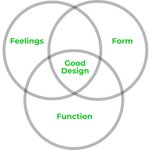Transitional Design
Storytelling and emotional appeals are frequently encouraged as a way to communicate in deliberative settings, given that they are common ways for people to communicate and therefore level the playing field.
Humphrey Obuobi • Addressing Power Imbalances in Deliberation
- MSPs provide the opportunity for greater understanding of different stakeholders’ capacities, roles and limitations, thus contributing to better coordination of interventions.
- MSPs can help organizations pool and share resources, including skills, funding, staff time, and logistical or administrative resources.
Social Relations – Transition Design Seminar CMU
They also facilitated regional enclave discussions (as described in the “Facilitation” section below) ahead of the deliberation to identify feasible policy strategies and co-design the questions that the deliberative poll would ask of the public.
Humphrey Obuobi • Addressing Power Imbalances in Deliberation
EXPLORE DESIGN
explore-design.empoweringdesign.net
power asymmetries can affect two important stages of the deliberative process (recruitment and facilitation)
Humphrey Obuobi • Addressing Power Imbalances in Deliberation
in framing problems (the most powerful stakeholder groups usually frame the problem);
Social Relations – Transition Design Seminar CMU
where power exists…
The Transition Design Approach Emphasizes:
- The need to frame problems within radically large, spatio-temporal contexts that include the past (how the problem evolved over long periods of time), present (how the problem manifests at different levels of scale) and future (visions of the long-term future in which the problem has been resolved).
Course Introduction – Transition Design Seminar CMU
In the modern era, the satisfiers for needs have often been appropriated by large centralized organizations such as the nation-state or multinational corporations. Such satisfiers are decontextualized — they are not unique to place and culture and their ownership, management and control is not embedded in the communities who depend on them.... See more
Designing Systems Interventions – Transition Design Seminar CMU
Stakeholder relations of conflict and opposition always require the greatest investment of time and energy to resolve, but relations of affinity, agreement and alignment (that are always present) often go unseen and acknowledged. Transition Design argues that relations of affinity and alignment are the “low hanging fruit” in a system and show us... See more